Say hello to the softest, fluffiest, orange-est, cinnamon rolls you’ll ever eat! With an easy dough, these come together quickly and the hardest part is sitting around and waiting for the yeast to do its thing. Top the rolls with a sticky, citrusy orange glaze and they will become your new favourite breakfast, snack and/or dessert.
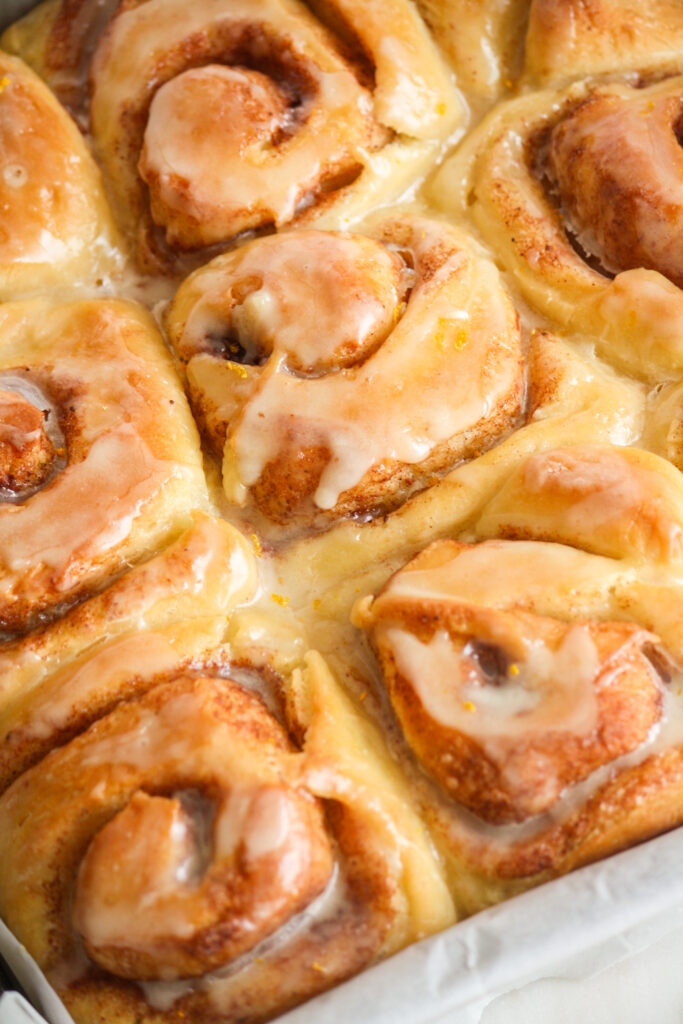
These have been on the blog for a while, but I wanted to update the photos. I’d adapted these from Sally’s Baking Addiction, swapping out the egg for milk and it worked like a charm. Making these without eggs means more of you can enjoy them, and there’s absolutely no compromise in flavour or texture!
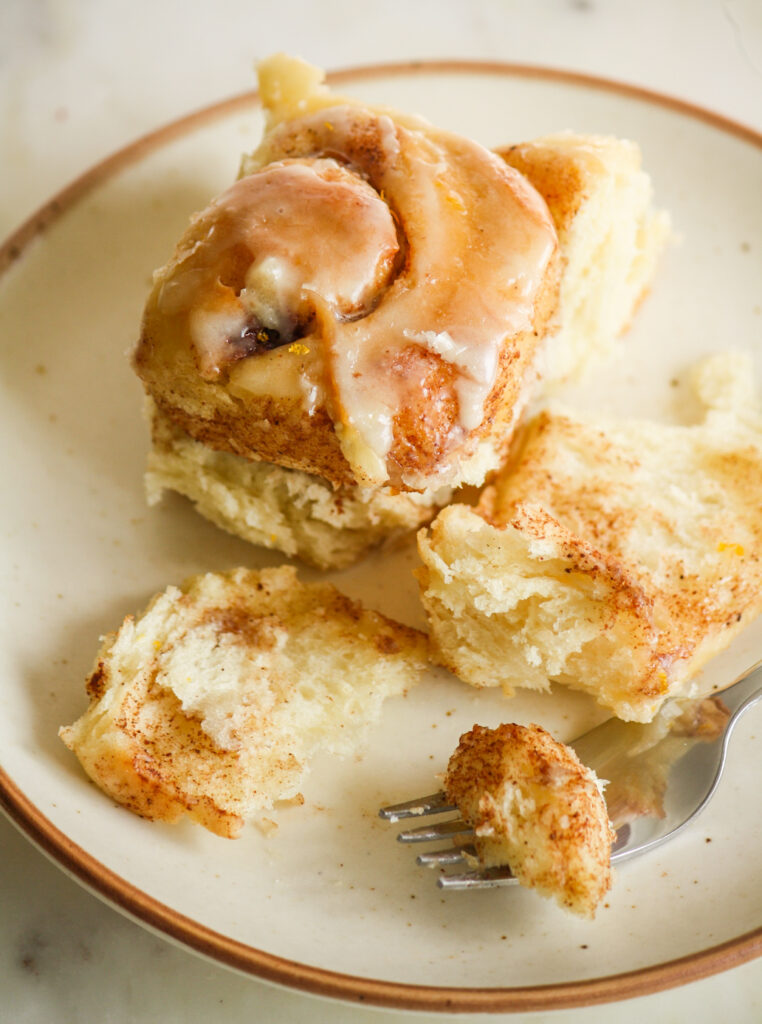
Put on a pot of coffee because that’s great with cinnamon rolls of all kinds! The orange juice in this dough is magical, making the rolls more tender and fluffy than even classic cinnamon rolls, or these apple ones. While best fresh from the oven, they’re great reheated even a few days later, just enough that the glaze becomes a little bit gooey again.
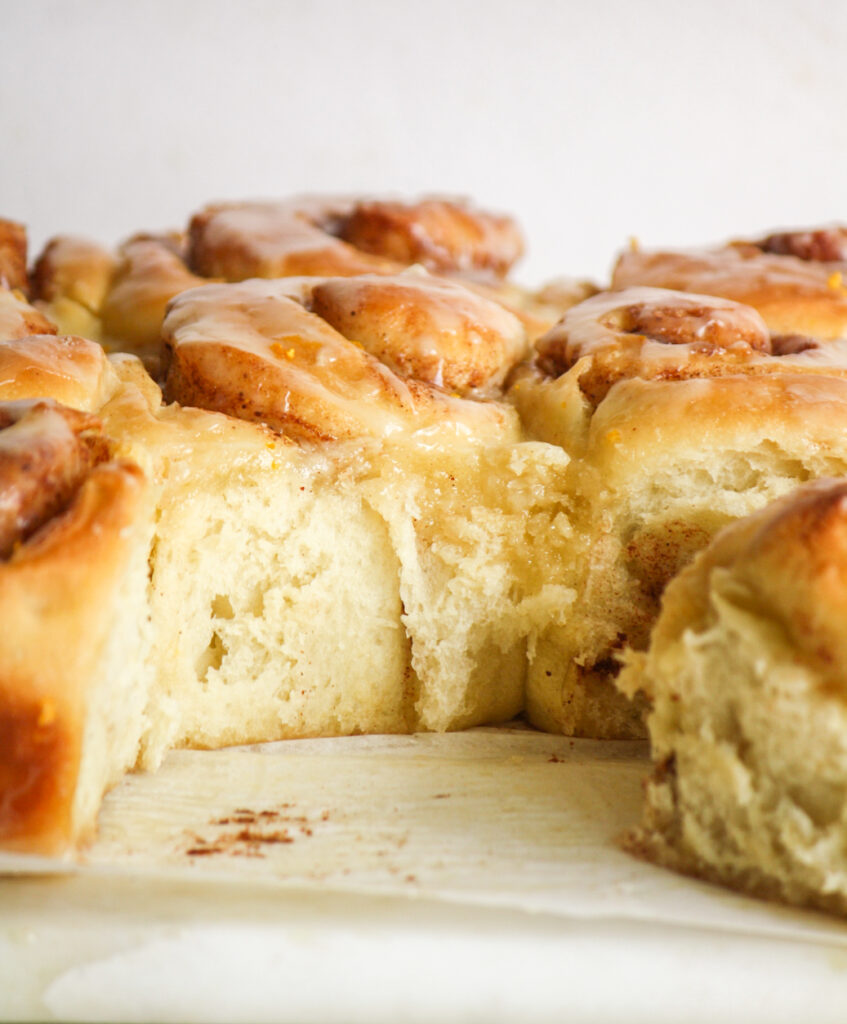
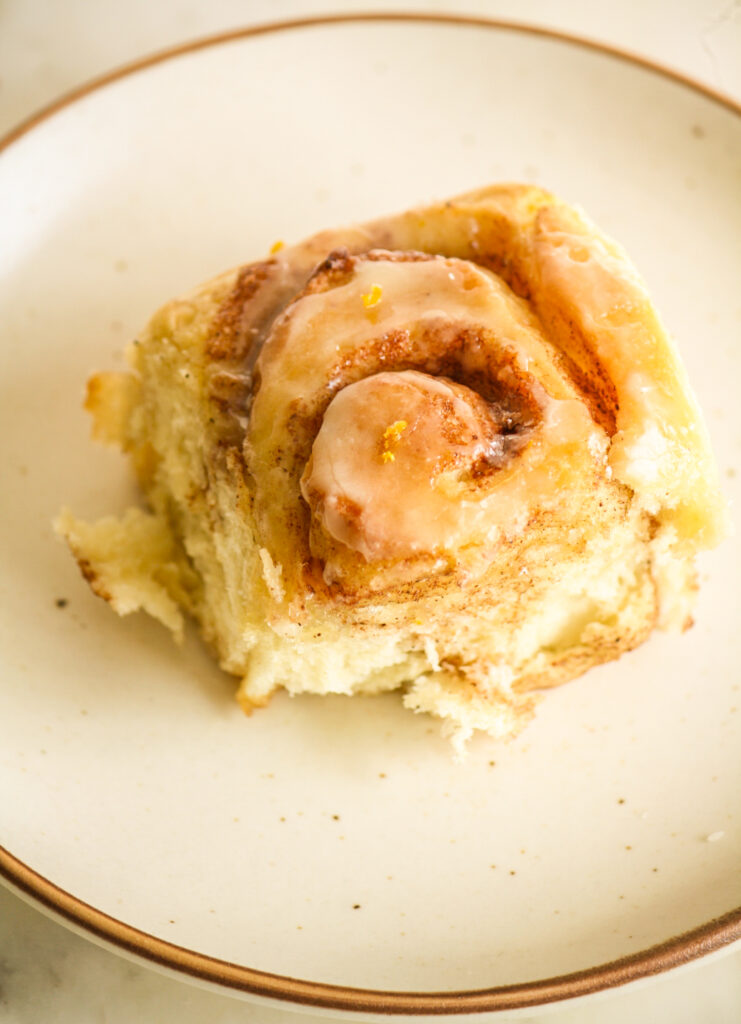
What takes these cinnamon rolls many, many notches ahead of the average ones, is the orange. The fresh, tangy flavour is perfect with warming cinnamon and gives the rolls a very obvious facelift. I loved loved loved it and hope you do too!
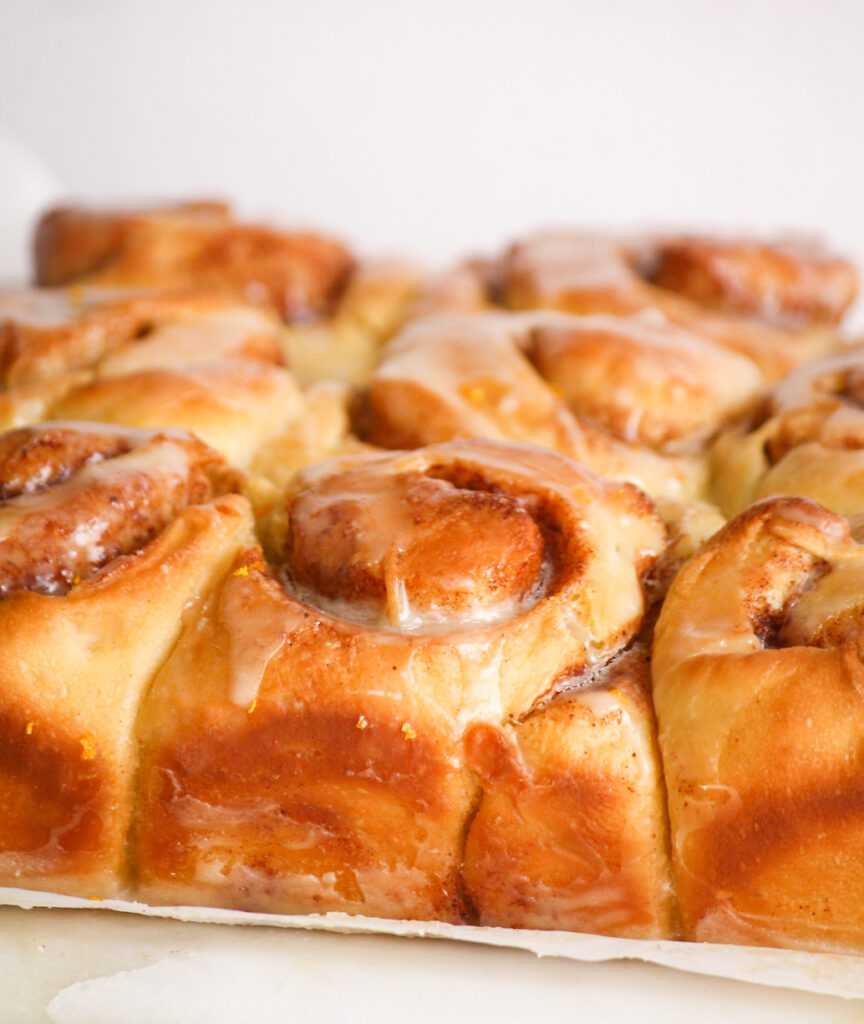
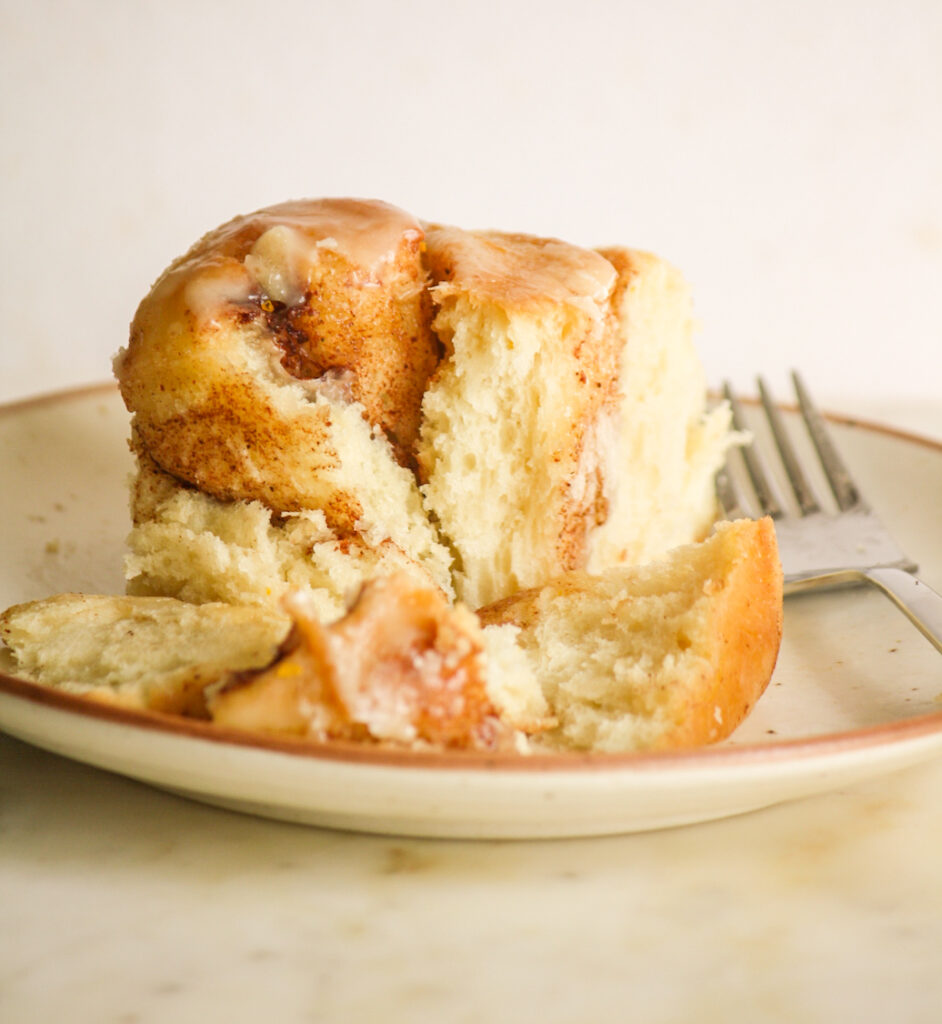
Let’s bake!
Please read the recipe notes before beginning.

Orange Cinnamon Rolls
Ingredients
For the dough
- 2 and 1/4 tsps active dry yeast
- 1/2 cup warm water (125 ml; you should be able to comfortably dip a finger in)
- Zest from 1 orange
- 1/2 cup fresh orange juice (125 ml, from 1 medium orange) I like the Valencia/'imported orange' variety
- 1/4 cup caster sugar (50 gms)
- 2 tbsps butter, at room temperature (30 gms)
- 1 tsp salt (if using salted butter, reduce to 1/2 tsp salt)
- 1/2 cup whole milk, at room temperature (125 ml)
- 3 and 1/2 cups all-purpose flour (420 gms)
For the filling
- 1/4 cup caster sugar (50 gms)
- 2 tsps cinnamon powder
- 1/4 cup butter, at room temperature (55 gms)
For the orange glaze
- 1 cup icing sugar, sifted (100 gms)
- 3 tbsps fresh orange juice
- 1/8 tsp vanilla extract
- Zest of half an orange
Instructions
- In a small bowl, mix the yeast and warm water with 1 tablespoon of the sugar. Cover and set aside for a few minutes till dissolved and frothy.
- To make the dough, first combine the orange juice, zest, remaining sugar, butter, salt and milk in a large bowl. Mix well. A stand mixer with the dough hook is useful here but this dough can also be mixed by hand with a little extra effort.
- Pour in the yeast mixture and beat for a few seconds till everything is well combined. Now add 3 cups of flour and beat on low speed. Gradually add the remaining half cup of flour, a tablespoon at a time and let the mixer continue to knead. If you don't use the entire remaining amount of flour, that's fine. You need a dough that is soft and pliable. It might be a little sticky if it's a hot day, but do not be tempted to add more than a total of 3 and a half cups of flour.
- If using a stand mixer, knead for at least 5 minutes after adding all the flour till the dough leaves the sides of the bowl and forms a ball. At this point I prefer to knead the dough with my hands for another couple of minutes. The dough should be soft, pliable, only slightly sticky and spring back slowly when poked with a finger and this is when you know it's ready to rise. Kneading entirely by hand may take a little longer but it's absolutely doable.
- Form the dough into a ball and place in a lightly oiled, large bowl (I use the mixing bowl itself). Cover with clingfilm and leave to rise in a warm area for 1 to 2 hours, until doubled. If your kitchen isn't very warm or you want to speed up the rise, turn your oven on to 100 C for a minute, switch it off, then place the bowl in it.
- When the dough has puffed and doubled in size, lightly flour your kitchen counter or a silicone mat which is more convenient for clean-up.
- Punch down the dough to release any air bubbles, then turn it out onto the floured surface. Flatten and pat it out into a roughly 10x12 inch rectangle.
- In a small bowl, combine the cinnamon and sugar. Spread the butter onto the rolled out dough, making sure it reaches every inch of it. Sprinkle on the cinnamon sugar, covering the dough entirely.
- With the shorter end of the dough facing you, slowly roll it up as tightly as possible, flouring your fingertips if needed. Slice into 9 equal pieces.
- Place each roll, cut side up (see photos below) in an 8-inch square baking pan lined with non-stick baking paper. Cover with clingfilm and let rise again for 30 minutes to 1 hour, until puffy.
- Preheat the oven to 190 C, then remove the clingfilm from the dish and bake for 25 to 30 minutes, until golden-brown on top.
- In the meantime, make the glaze by combining the icing sugar, orange juice, zest and vanilla in a small bowl. Stir well until smooth, adding more sugar for a thicker glaze or more juice for a thinner glaze. It should be spreadable, and not super runny. The glaze will thicken as it sits so don't make it too much in advance.
- When the rolls are done, let them cool for 10 minutes, then spread the glaze onto them while warm, getting it into the folds of the rolls as best as you can, so that insides are soft and gooey! Let the rolls cool another 10 minutes or so, then use a sharp knife to take each one out. Enjoy!
- Store the rolls in an airtight box at room temperature for 2 to 3 days (if it's hot and humid, then they're best in the fridge after day one) and in the fridge for about a week, reheating them before eating. They can also be frozen although I do think the texture is best when eaten as fresh as possible. Happy baking!
Notes
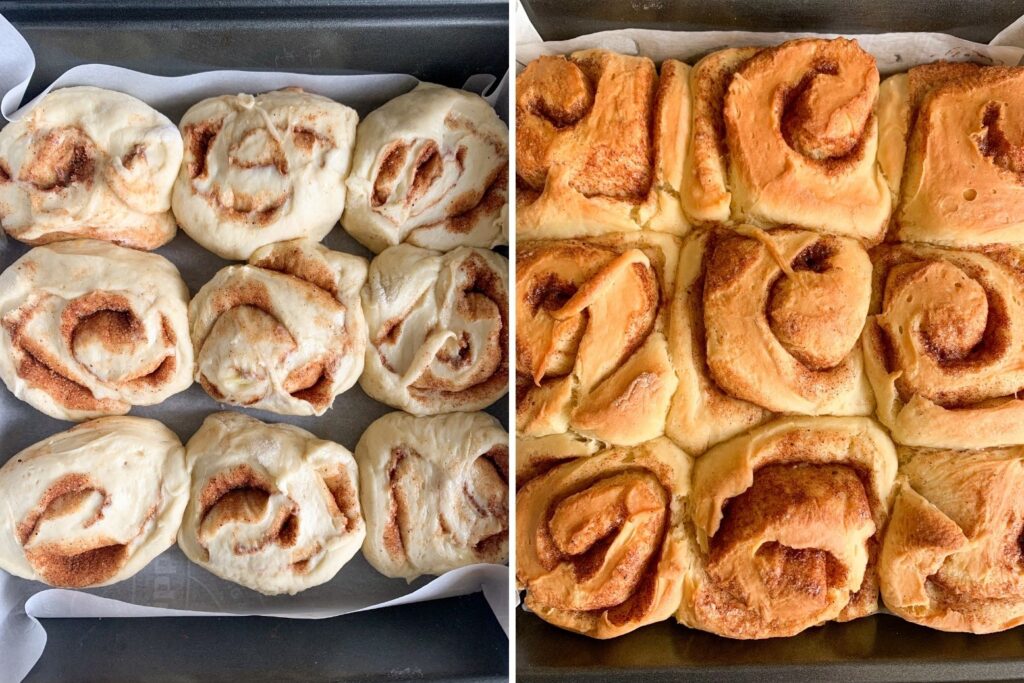
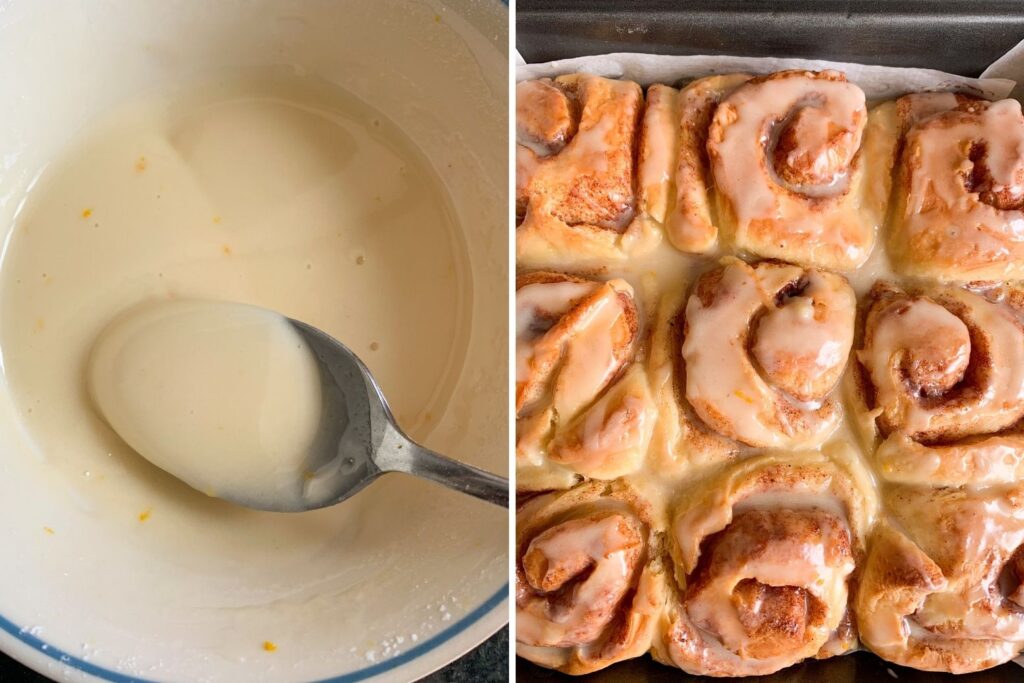

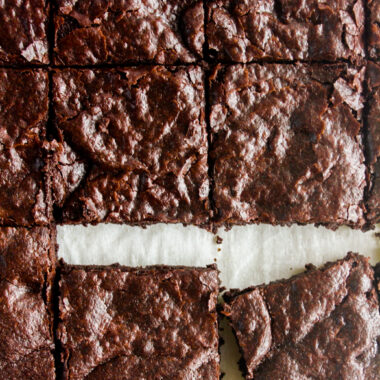
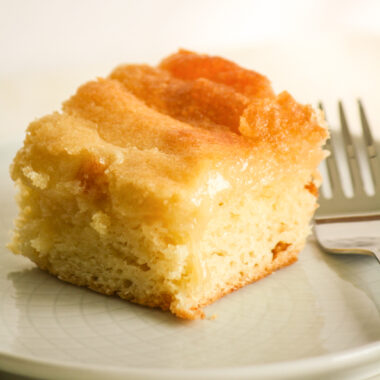
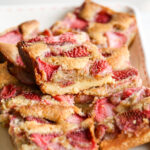



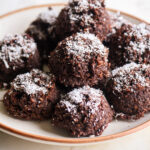






Aloha Gayatri! I’m writing from Hawaii, USA! I came across your website while looking for the best cinnamon roll recipe. Without eggs! Halelujah! I want to bake these Orange Cinnamon Rolls and Apple Cinnamon Rolls for my family, however, I need to ask how to substitute the whole milk and animal butter, to make it vegan. What suggestions can you give to bake these rolls picture perfect, as moist looking as your pictures without using animal milk or butter? Mahalo (thank you!)
Hi Deborah! Thank you for your comment 🙂 I’m not vegan myself so I can’t say for sure but usually any plant-based milk and vegan butter would work. If you have a go-to replacement that you use in other recipes, it should work here too. Let me know how it goes!
Pingback: Caramelised Onion and Cheddar Rolls (Eggless)
Pingback: Apple Cinnamon Rolls with Cream Cheese Frosting (Eggless)
Pingback: Cinnamon Rolls with Vanilla Glaze (Eggless)
Do we use fresh orange juice or the tetra pack one ?
I used fresh and prefer it for the best flavour, but the packaged kind is fine too, try and ensure it’s sugar-free so that the orange stands out.